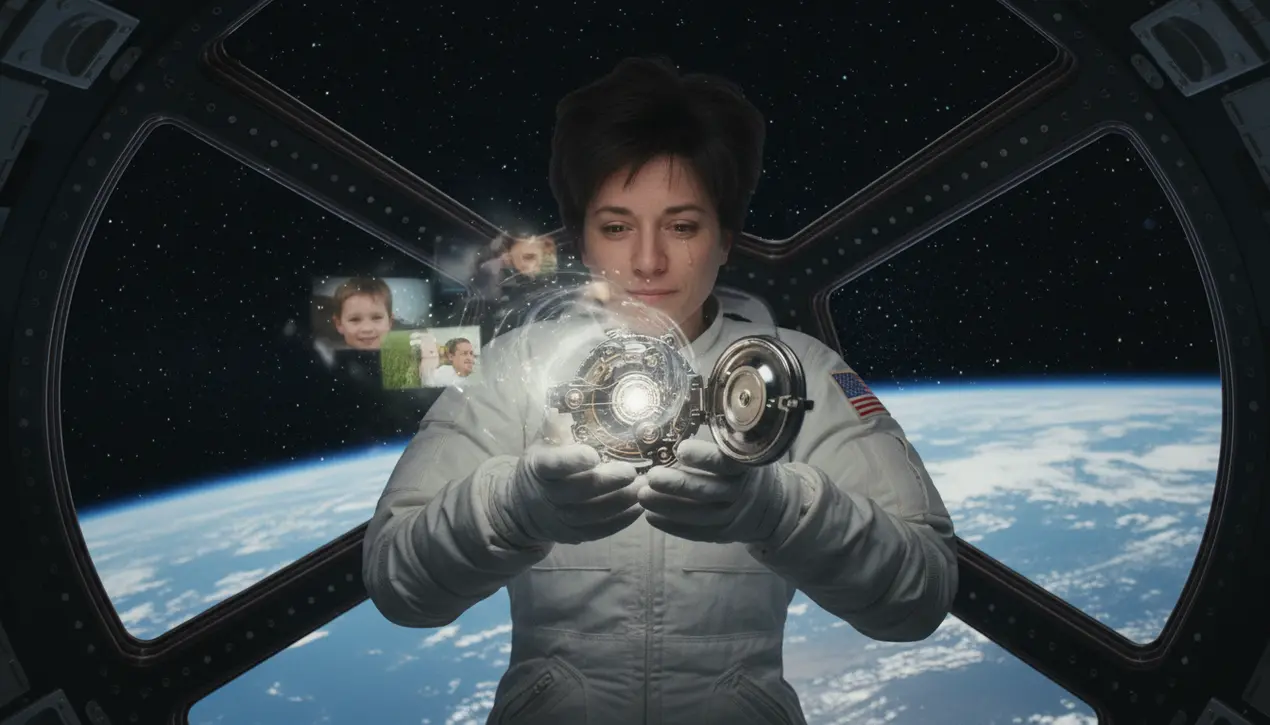
Sciencespace & astronomyNASA Missions
Astronaut's amulet stores memories in zero gravity.
TH
Thomas Green
21 hours ago7 min read1 comments
In the profound silence of orbit, where Earth hangs as a marble against the infinite black, astronauts have long carried intangible cargo: memories of home. Now, a remarkable piece of engineering, the astronaut's amulet, seeks to give that cargo a physical form, a pocket-sized capsule that only reveals its intimate contents when spun in the unique environment of microgravity.This isn't merely a locket; it's a sophisticated mechanical companion, a tangible bridge across the void, merging the cold precision of aerospace engineering with the warm, beating heart of human experience. The very concept echoes the grand vision of pioneers like Elon Musk, who see space not just as a frontier to be conquered, but as a place where humanity must learn to live and thrive, bringing our culture and our personal histories with us.The amulet’s activation mechanism is a stroke of genius, a deliberate design choice that makes the memory-keeping ritual inherently spatial. On Earth, gravity is a constant, a force we are so accustomed to that we forget its presence.But in the International Space Station, where objects float and the human body undergoes radical adaptation, the simple act of spinning the amulet becomes a deliberate, ceremonial engagement with this new reality. It’s a kinetic key, unlocking not just a compartment, but a psychological sanctuary.Imagine, after a grueling day of complex extravehicular activity or delicate scientific experiments, an astronaut retreats to their crew quarters, floating in the dim light. They take out the amulet, a personal artifact in a world of standardized equipment, and give it a spin.In that moment, as the internal mechanism recognizes the absence of dominant gravitational pull, a small door clicks open. Inside isn't just a photograph or a lock of hair; it's a connection to a specific moment—a child's laughter, a partner's smile, the feeling of grass underfoot.This is where technology transcends its function and becomes a vital tool for psychological resilience, a concept NASA's Human Research Program has studied for decades, understanding that the mental well-being of crew members on long-duration missions to the Moon or Mars will be as critical as the reliability of their life support systems. The amulet operates on a principle that would be mundane on Earth but is magical in orbit, a beautiful analogy for how our fundamental physical laws can be repurposed to serve our emotional needs.It’s a piece of the personal, seamlessly integrated into the professional, a counterweight to the isolation that can accompany such a majestic yet lonely journey. This fusion of sentimental value and technical innovation represents a new chapter in space habitation design, moving beyond pure utility to create objects that acknowledge the astronaut not just as an operator, but as a complete human being. As we stand on the cusp of a new era of commercial space stations and lunar bases, such considerations will become paramount, ensuring that as we reach for the stars, we don't leave our humanity behind.
#astronaut
#keepsake
#microgravity
#design
#space travel
#innovation
#editorial picks news
Stay Informed. Act Smarter.
Get weekly highlights, major headlines, and expert insights — then put your knowledge to work in our live prediction markets.
Related News
Comments
Loading comments...
© 2025 Outpoll Service LTD. All rights reserved.